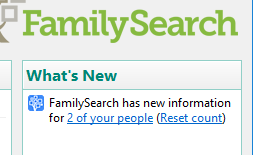Prior to RootsMagic 7’s new Import Lists feature, there was no way from within the program to import custom Source Templates from one database to another except through a laborious, one-at-a-time export to a .rmst file which you would then import, one-at-a-time. Or, alternatively, you would create a source against each custom template for a dummy person whom you would then drag’n’drop to the target database – a not very intuitive procedure. The 413 built-in templates are uneditable so you would have to copy them one at a time to make them editable. A workaround was developed that stored all the built in template definitions in one RootsMagicSTuser.rmst file which, when imported, created user-editable copies in the target database. Because this is a plain text XML file, revisions could be made with a text editor, especially with one intended for XML editing. Thus a user could maintain a master custom template .rmst file for import into new databases.
Import Lists made the transfer of custom source templates much easier by skipping the singular .rmst export/import process. Now it is possible to maintain a database of custom source templates, even Master Sources, and import them directly into another database. This page presents:
1. A script that creates editable copies of the 413 built-in source templates in any RootsMagic database:
SourceTemplates_CopyBuiltin2Editable.sql
2. A new database to which the script has been applied, for those who do not want to use SQLite:
SourceTemplatesEditable-normal-2017-04-19.rmgb
3. A script that converts editable (custom) source templates into ultra-split templates (no fields in Source Details):
SourceTemplateExtremeSplitConvert.sql N.B.: WARNING – use this on unused templates; it does not convert existing citations and master sources. For scripts that convert existing sources and the templates they use to ultra-split, see Sources – Adventures in Extreme Splitting.
4. The database from #2 to which the ultra-splitter has been applied:
SourceTemplatesEditable-ultrasplit-2017-04-19.rmgb
 |
| Builtin source templates converted to user-editable templates with splitsbetween Master Source level and Citation or Source Details level unchanged. |
All of the standard source templates are copied and fully customisable.
Use this file as a starting point for a new database
OR,
on an existing database,
use File > Import Lists > Source Templates to import the user-editable source templates
OR
compose a draft source in it using a custom template and copy the resulting sentences for Footnote, Short Footnote and Bibliography to a Free Form source in your working database.
These user-editable copies are split at the same level as the built-in ones.
 |
| Builtin source templates converted to user-editable and ultra-split. |
All of the standard source templates are copied and fully customisable. These user-editable copies have all fields in the Master Source and none in Source Details, corresponding to ultimate splitting of sources, a surefire way for footnotes to migrate unsullied through GEDCOM and transfer to FamilySearch Family Tree (and, very likely, through the pending TreeShare with Ancestry).
Use this file as a starting point for a new database
OR,
on an existing database,
use File > Import Lists > Source Templates to import the user-editable source templates
OR
compose a draft source in it using a custom template and copy the resulting sentences for Footnote, Short Footnote and Bibliography to a Free Form source in your working database.






thejerrybryan
06 November 2011 00:10:08
I haven’t looked at the first query yet, but the second query won’t run because all I have are Free Form templates. Hence, the following:
FROM SourceTemplateTable
INNER JOIN SourceTable ON
SourceTemplateTable.TemplateID = SourceTable.TemplateID
yields a NULL result because the Free Form template appears not to be in the SourceTemplateTable.
Jerry